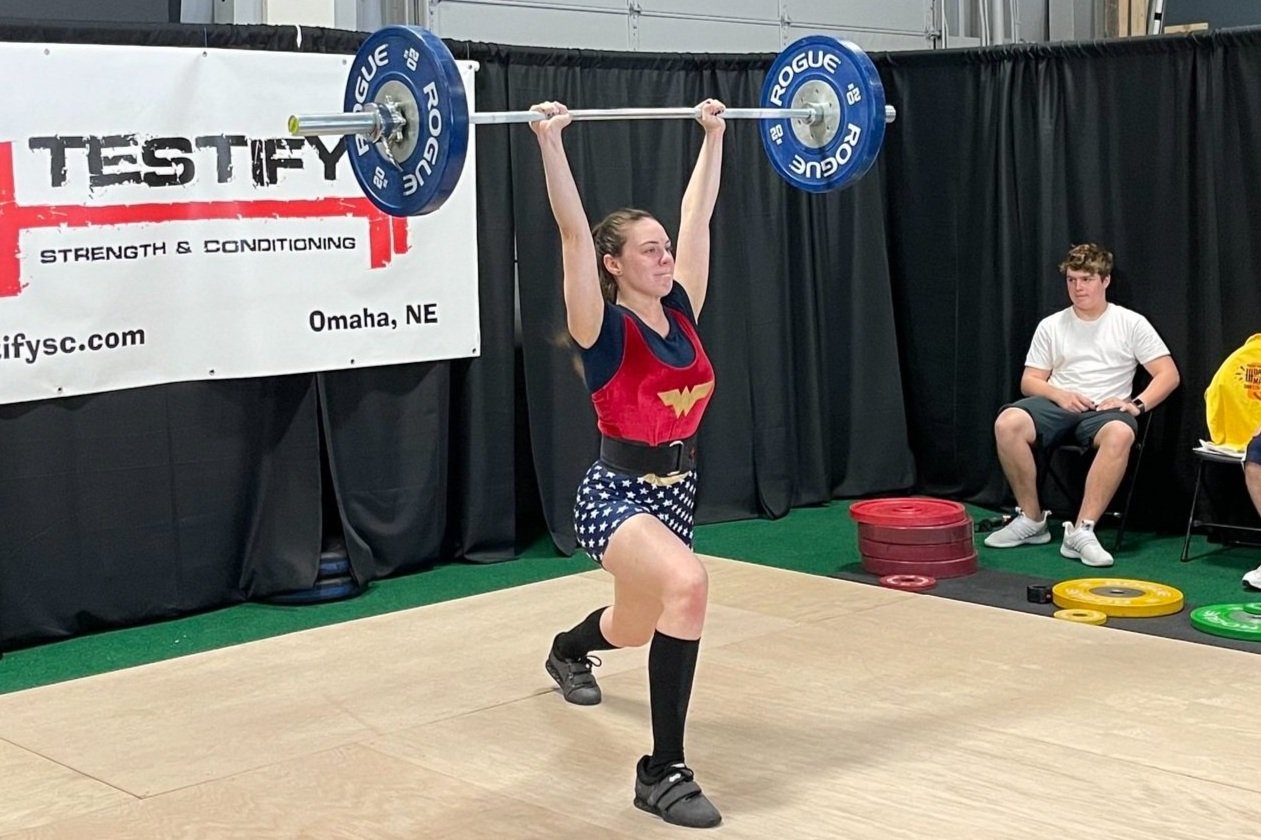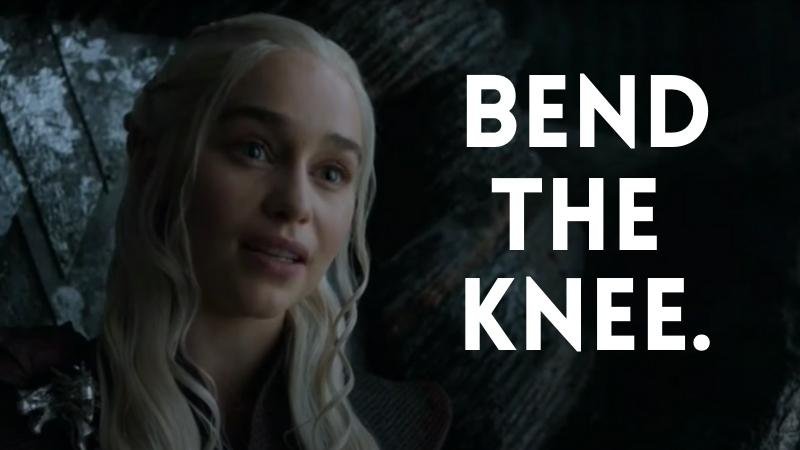This Mistake Will RUIN All Your Lifts!
/Want to improve every one of your lifts with one fix? Make sure you're doing this.
At Testify, we offer small group training, private coaching (in-person or remotely via Zoom), online coaching, and form checks. Click the button below to get quality coaching from a Starting Strength Coach and start getting stronger TODAY.
Maximum Acceleration in the Clean! | Olympic Weightlifting
/Learn how to put maximal acceleration into your clean. Phil and Becky Meggers discuss and demonstrate how to do this.
(This video is a Blast from the Past video originally published on 09/20/21.)
At Testify, we offer small group training, private coaching (in-person or remotely via Zoom), online coaching, and form checks. Click the button below to get quality coaching from a Starting Strength Coach and start getting stronger TODAY.
Stop Using Your Hands to Catch Your Cleans!
/(A Blast from the Past article originally posted on 01/22/21)
The clean is racked (i.e., caught or received) on the shoulders. Not in the hands.
Figure 1: This is the correct way to rack a clean.
When you rack a clean, you do so by rapidly punching your elbows forward and up so that the barbell can sit on the shelf provided by your delts (Figure 1). This shelf is extremely strong, stable, and it can support a lot of weight - more than you can clean, in fact.
On the other hand - or rather, hands - if you receive your cleans by supporting the bar in your hands (Figure 2), your poor, tiny, bent wrists will hate you for it, and it’s possible that your collarbones will too.
Figure 2: Don’t rack your cleans like this. Your wrists will despise you.
To rack the bar properly, jam the elbows forward and up and receive the bar with a loose grip - be sure to let the thumb slip out of the hook grip as you punch the elbows forward.
Figure 3: Elbows forward and up and a loose grip on the bar
It’s possible that your pinky finger (maybe even your ring finger) will slip off the bar during the catch, and while this is not ideal (especially if you need to jerk the barbell overhead yet), it’s not the end of the world. Do whatever you need to do with your grip to permit the receiving of the bar on your shoulders.
Your wrists will not be straight when you catch a clean, and that’s perfectly fine. Whether a lifter receives the bar correctly on the shoulders or not, the wrists will be bent backwards in extension, but a bar caught on the shoulders (with elbows forward and up) is supported by the shoulders, so the wrists - although bent - do not take any of the load. A bar caught with low elbows, however, cannot be successfully supported by the shoulders and is instead supported on bent - and usually painful - wrists.
Tommy doesn’t even need hands to rack his cleans. (We do NOT recommend trying this at home, folks)
Be kind to your wrists and commit to catching your cleans on your shoulders. You’ll enjoy the lift far more when your wrists aren’t screaming at you.
As always, we hope this helps you get stronger and live better.
-Phil
PS: Whenever you want even more Testify in your life, here are some free resources:
Follow Testify on Instagram HERE.
Subscribe to Testify’s YouTube channel HERE.
Book a free intro and strategy session with us HERE.
Pick up a free copy of Testify’s Squat Guide: 12 Tips to Improve Your Squat Now HERE.
Get our free weekly email - containing useful videos, articles, and training tips - HERE.
(Some links may be affiliate links. As an Amazon Associate, Testify earns from qualifying purchases.)
At Testify, we offer small group training, private coaching (in-person or remotely via Zoom), online coaching, and form checks. Interested in getting stronger, looking better, and having more energy?
Timing and Bounce on the Jerk
/Let’s briefly address the “bounce and drive” aspect of the jerk. This applies to the split jerk, the power jerk, and the squat jerk. Note that we’re not referring to this motion as a “dip and drive” because we want the bounce of the jerk - i.e., the turnaround at the bottom of the movement - to be sharp and quick.
(Today’s topic is far more easily understood when watching it in action, so I’d strongly recommend watching the included video.)
By aiming for a short, quick, sharp bounce out of the bottom of the movement, we’re not only trying to impart as much upward momentum to the barbell as possible - we’re also endeavoring to take advantage of the flex (or whip) of the bar, and a sharp bounce does exactly this.
To achieve the proper “bounce and drive” that we’re aiming for, cue yourself “hard bounce” the next time you’re practicing your jerks. After the clean, immediately before starting the downward motion of the jerk, mentally remind yourself “hard bounce” and then try to get exactly that motion out of the bottom of the jerk.
As mentioned earlier, watching this motion in action is very helpful, so I’d recommend watching the video included earlier in this article. In the meantime, we hope this helps you get stronger and live better.
(Some links may be affiliate links. As an Amazon Associate, Testify earns from qualifying purchases.)
If you found this helpful, you’ll love our weekly email. It’s got useful videos, articles, and training tips just like the one in this article. Sign up below, and of course, if you don’t love it, you can unsubscribe at any time.
At Testify, we offer small group training, private coaching (in-person or remotely via Zoom), online coaching, and form checks. Interested in getting stronger, looking better, and having more energy?
Knee Position in the Split Jerk
/A common problem with new lifters and the split jerk - and it can be a problem with experience lifters, too - is that of knee position. The back knee often requires a bit more attention than the front knee, but we'll cover the front knee position briefly before moving on to the back knee.
Figure 1
For a demonstration of these problems and their solutions, check out the short video included near the end of this article.
Problem #1: Front Shin Angled Forward
When you lock the barbell out overhead in the split jerk, you want the front shin to be roughly vertical as Becky demonstrates in Figure 1, so if you find that your shin tends to be angled forward when you land as Becky demonstrates in Figure 2, you probably need to reach further with your front foot.
Figure 2: front shin angled forward
How to Fix This Problem
To help with this, try cueing yourself to reach further - specifically, reach forward with your front heel. Thus, the cue is “front heel forward” or “reach with your heel.”
If necessary, you can picture yourself landing with your front shin actually angled backward. In other words, envision your landing position with your front heel ahead of your front knee. While this mental picture is an exaggerated one and not the actual position we want (and thus represents an overcue), it can occasionally be useful in achieving the correct position.
Problem #2: Back Knee Completely Straight
As for the back leg, we want the knee to be bent or unlocked with the back heel off the ground as you see Becky demonstrate in Figure 1.
Figure 3: don’t do this.
While the knee bend is not going to be 90 degrees - so don't do what Becky’s doing in Figure 3 - we certainly don't want the back knee to be completely straight either, and that's a common problem that needs to be addressed.
A straight back leg tends to jam the lifter forward onto the front foot. Note the difference between the correct position in Figure 4a versus the straight leg position in Figure 4b.
If you find that you're landing forward with an excessive amount of weight on your front foot, it's very possible that you need to bend your back knee.
Another problem with a straight back leg is that the depth or amount of drop you can achieve in the split should come from the hip joint and the knee joints of both legs. You can clearly see this with the front leg - the hip is flexed (i.e., bent), and the knee is bent, and those two factors together allow the lifter to drop down into position.
Figure 4a (left) vs Figure 4b (right)
The hip and knee of the back leg should also contribute to the drop, but if the back knee is completely straight, it can't contribute to the dropping motion. This will typically mean that the only way to drop lower is to bend the front knee even more, which then pushes the front knee forward into a weaker position.
On a lesser note, allowing the back knee to bend means the hip of the back leg doesn't have to occupy as severe an angle as it otherwise would. Again, note the difference between the two positions shown in Figure 4a and 4b - if you try this yourself, you'll note the difference in sensation at the hip as well as in the low back. The bent knee position will feel stronger and more stable.
How to Fix This Problem
To help fix a straight back leg, try one of the following cues immediately before performing the jerk:
The most straightforward approach is simply “bend the back knee” or “bend the knee.”
If the above cue doesn’t work, try “drop the back knee” or simply “back knee down.”
Finally, you can also cue yourself to land with more weight on your back leg or foot.
As always, we hope this helps you get stronger and live better.
(Some links may be affiliate links. As an Amazon Associate, Testify earns from qualifying purchases.)











